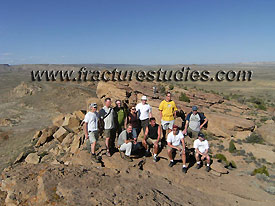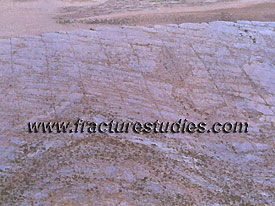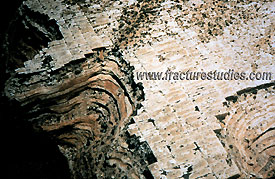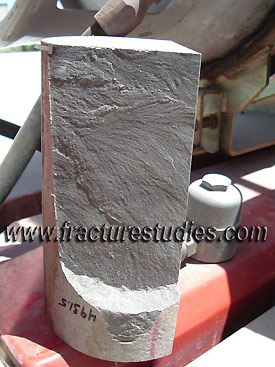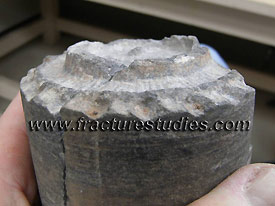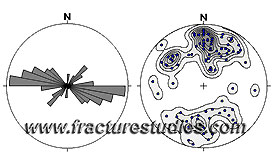ServicesOur services include consulting on fractured reservoir problems and strategies, including fracture characterizations and analyses based on core, image logs, outcrops, and aerial photography. We also provide field trips, classes, workshops, webinars and lectures that provide an overview of fracture types and principles based on our 50-plus years of fracture studies. Dr. Lorenz also lectures on the importance of the interactions between geoscience and the oil and gas industry, the development of the science of geology and various aviation topics. 1. Core: Fracture Characterizations and AnalysesAn outline and detailed examples of typical fracture core reports are available to clients; please contact us for additional information. A core report can contain analyses such as the differentiation between induced and natural fractures, the determination of natural fracture types and spacings, estimates of the three-dimensional fracture distributions, determinations of the fracture orientations relative to the in situ stresses, and assessments of vertical and lateral fracture permeability. Core-handling, marking, sampling and analysis protocol for natural fractures is downloadable as a pdf; CoreProtocol.pdf . List of selected analyses and data we can provide from an ideal core:
2. Outcrop Fracture StudiesList of selected analyses from an outcrop:
3. Classes, Workshops, Webinars and LecturesClasses can be as short as one-hour “lunch and learns” or up to five-day classes with exercises. Class highlights: All reservoirs are fractured, but not all fractures have significant effects on reservoirs. This course provides an overview of fracture types and principles gathered over the course of decades of fracture studies. It will have an applied focus, aimed at understanding the application of fracture characteristics to the behavior of hydrocarbon reservoirs. Topics covered: fracture types, fracture origins, fracture distributions, fracture effects on reservoirs, distinguishing natural from coring-induced fractures, using other coring-induced artifacts to optimize fracture analysis in cores, case histories, and the interactions of natural fractures with in situ stresses and with hydraulic stimulation fractures. Instructors also use a 65-piece collection of core to demonstrate hands-on examples of natural and induced fractures that can be brought to the classroom depending on distance from Albuquerque, New Mexico. This class has been taught for: the Petroleum Professional Development Center (Midland College), Enhanced Oil Recovery Institute (University of. Wyoming), Rocky Mountain Association of Geologists, American Association of Petroleum Geologists, Pemex, ExxonMobil Corporation, Chesapeake Oil Corporation, ConocoPhillips Company, Devon Energy Corporation, EnCana Resources Incorporated, Sonatrach Petroleum Corporation, High Mount Exploration and Production LLC, Marathon Oill Company, Occidental Petroleum Corporation, Petrel-Robertson Consulting Ltd, South Dakota School of Mines and Technology, New Mexico Institute of Mining and Technology, and the Peruvian Geological Society. The natural fracture course includes topics such as:
Fractures in core
Fractures in core; induced, types and uses
Fracture mechanics
Selected field examples
Spacing of fractures
4. General Consulting on Fractures Reservoir Problems and StrategiesIncorporating fracture data into geologic and engineering models 5. Field Trips to Study Natural Fractures and Sedimentology
6. Aerial reconnaissance and photographyLicensed commercial pilot and flight instructor John Lorenz can provide aerial images and aerial scale geologic assessments of your producing areas or analog site. Rates: Day rate (with New Mexico gross receipts taxes where applicable), plus expenses. Contacts
|
|
